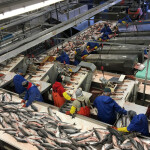Cheating customers by substituting one food or food ingredient for another, cheaper product is still commonplace in the UK despite the furor caused by last year’s horsemeat scandal. This time take-out meals are under the spotlight.
Consumer organization Which? DNA tested lamb takeaways to discover whether curries and kebabs really did contain lamb or another less expensive meat. The results were “quite astounding,” the organization reported.
Which? purchased 60 takeaways — 30 each in London and Birmingham, the U.K.’s second largest city. “Out of the 30 lamb takeaways we bought in Birmingham, 16 were adulterated, one contained less than 5 percent lamb and four contained no lamb at all,” a spokesman said.
“And of the 30 curries and kebabs we bought in London, eight were concealing other meats. The meat in five could not be identified — likely to be because of overcooking or repeated cooking.
“Where the lamb had been replaced, it was typically substituted with chicken and beef allowing the restaurant to cut costs while cheating customers out of what they had paid for.”
Although the Which? survey consisted of a relatively small number of samples and was conducted in only two cities, the organization contacted local authority enforcement officers (EOs) in four UK regions — three in England and one in Scotland — which reported similar results during the past two years.
In Warwickshire, all of the 20 minced lamb kebabs tested by EOs contained other meats, and just three of 19 curries contained only lamb. West Yorkshire EOs have prosecuted numerous restaurants for mislabeling meat. However, this hasn’t deterred other restaurants in the area from passing off chicken and beef as lamb.
After the horsemeat scandal, there was supposed to be a tightening up of inspections and testing to determine just what was in food products being sold to the general public.
Worryingly, though, the recent Which? survey showed that food standard checks and testing are decreasing and the current squeeze on local authority budgets probably means that this trend will continue. At the same time, of course, food fraud is likely to increase because of the harsh economic climate.
Which? points out that financial penalties imposed on those companies that are caught are relatively small compared with the gains that can be made, and prison sentences are rare.
Food fraud isn’t just limited to meat. An EU report in October 2013 listed the 10 foods most at risk of fraud and it was not surprising to find fish near the top of that list. Popular species are frequently replaced with cheaper varieties, and farmed fish is sometimes sold as wild.
In 2011, the Food Safety Authority of Ireland found that 19 percent of 111 fish samples were mislabeled and species such as pollock and smelt were being sold as cod. A similar level of substitution was found in the USA, according to Which?, while in the U.K., in 2008, 10 percent of 380 fish sampled by the Food Standards Agency (FSA) were mislabeled.
Another FSA survey in 2007 found that 12 percent of 128 samples of species such as sea bream and salmon labeled as wild were actually farmed.
Other instances of food fraud which apply to fish include mislabelling geographic origins; selling standard produce as organic; selling thawed out frozen varieties as ‘fresh’; adding undeclared substances such as polyphosphate; and adding excessive water as glaze.
This latter example was highlighted by Which? as frozen prawns and scallops were included in its list of “10 commonly adulterated foods” when water was added to increase the weight and therefore the price at which they were sold.
It could be argued, as indeed it was during the horsemeat crisis, that mislabeled foods do not harm the people who eat them, but that is not the point. Customers have a right to expect that what they buy is actually what they think they are buying.
After the horsemeat scandal, Which? found that consumer confidence in meat had been “hit hard.” In November 2013, 49 percent of respondents had changed their meat-eating habits, a third were buying less meat and 19 percent had changed where they shopped.
The seafood industry would do well to take note.






